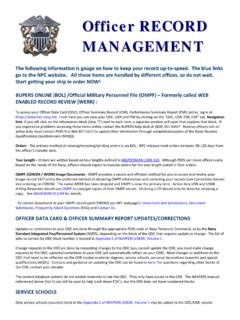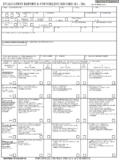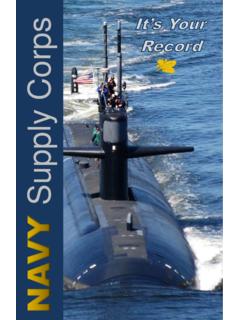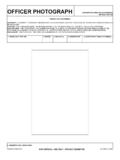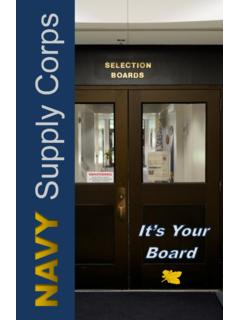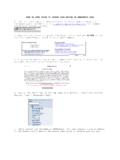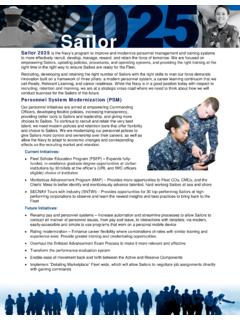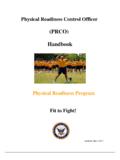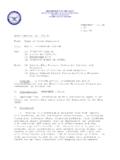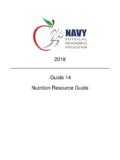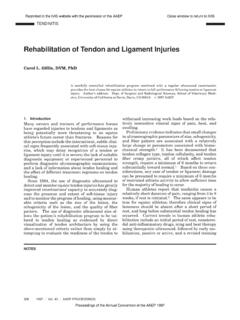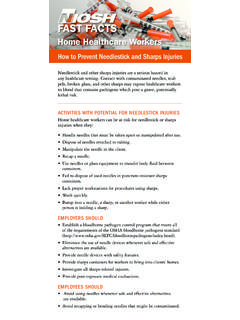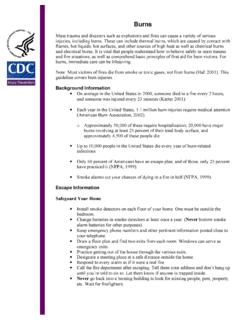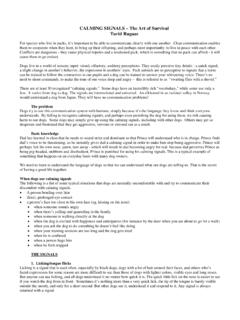Transcription of This manual contains copyrighted material.
1 this manual contains copyrighted material .*FM 8-285*NAVMED P-5041*AFJMAN 44-149 FMFM 11-11 FIELD MANUALHEADQUARTERSNO. 8-285 DEPARTMENTS OF THE ARMY, THENAVMED P-5041 NAVY, AND THE AIR FORCE ANDAIR FORCE JOINT MANUALCOMMANDANT MARINE CORPSNO. 44-149 Washington, DC 22 December 1995 FLEET MARINE FORCE MANUALNO. 11-11iFM 8-285/NAVMED P-5041/AFJMAN 44-149/FMFM 11-11iiFM 8-285/NAVMED P-5041/AFJMAN 44-149/FMFM 11-11iiiFM 8-285/NAVMED P-5041/AFJMAN 44-149/FMFM 11-11ivFM 8-285/NAVMED P-5041/AFJMAN 44-149/FMFM 11-11vACKNOWLEDGEMENTS1.
2 Iranian-News Agency: As published in the April 1986 edition ofNuclear Biological and Chemical Defense and Imperial War Museum, Lambeth Road, London 8-285/NAVMED P-5041/AFJMAN 44-149/FMFM 11-11 PREFACEP urposeThis manual serves as a guide and a reference for trained members of the Armed Forces Medical Services andother medically qualified personnel on the recognition and treatment of chemical agent casualties and conventionalmilitary chemical , this manual provides information on first aid (self-aid, buddy aid, andcombat lifesaver (CLS) aid) for these this manual (1) Classifies and describes chemical agents and other hazardous chemicals associated with militaryoperations.
3 (2) Describes how to diagnose and treat conventional military chemical injuries (that is, riot controlagents, smokes, incendiary agents, and other inhaled noxious industrial-type chemicals).(3) Describes procedures for recognizing chemical casualties (app A).(4) Describes procedures for first aid, medical treatment, and medical management of chemical casualties.(5) Describes measures for handling contaminated clothing and equipment (app B).(6) Describes medical management and treatment in chemical operations (app C).
4 (7) Describes procedures for decontamination of the eyes and skin (app D).(8) Describes procedures for administering the Nerve Agent Antidotes, MARK I (NAAK) and convulsantantidote for nerve agent (CANA) (app E).b. The manual is divided into two parts:(1) Part One, Chemical Agent Casualties, covers the recognition and treatment of nerve agents,incapacitating agents, blister agents (vesicants), lung-damaging agents (choking agents), and blood agents(cyanogens) casualties.(2) Part Two, Conventional Military Chemical Injuries, covers the recognition and treatment of injuriescaused by riot control agents, smokes, incendiary agents, and other noxious industrial-type The material in this manual is applicable to both the conventional battlefield and the integrated environmentof the battlefield.
5 (For the purpose of this manual , the integrated environment is intended to mean warfareand/or contingency operations where nuclear, biological, and chemical (NBC) weapons/agents are being employedor have a high probability of being employed in addition to conventional weapons.)Definitionsa. Chemical is a chemical substance which, because of its physiological, psychological, orpharmacological effects, is intended for use in military operations to kill, seriously injure, or incapacitate humans(or animals) through its toxicological effects.
6 Excluded are riot control agents, chemical herbicides, and smokeand flame materials. Chemical agents may be nerve agents, incapacitating agents, blister agents (vesicants),lung-damaging agents, blood agents, and vomiting Chemical Contamination. this is the deposition of chemical agents on personnel, clothing, equipment,structures, or contamination mainly consists of liquid, solid particles, and vapor hazards.(Vapor hazards are probably the most prevalent means of contaminating the environment.)
7 C. Chemical Decontamination. this is the process of sufficiently reducing the hazard caused by chemicalagents in order to allow the mission to be can be done by individual servicemembers, unit decontamination teams, or chemical used methods for skin decontaminationinclude removal and/or chemical neutralization of agent(s) and clothing removal for medical examination; forequipment, the methods used are removal, destruction, covering, weathering, and chemical Persistence.
8 Chemical agents maybe divided into two main categories: persistent and nonpersistent.(1) Persistent agents, in a solid or liquid state, continue to present a hazard for considerable periods afterdelivery. They remain as a contact hazard and/or an inhalation hazard by very slowly vaporizing.(2) Nonpersistent agents dissipate or vaporize rapidly after release and present an immediate shortduration hazard. These agents are released as aerosols, gases, vapors, liquids, or Physical agents cover the whole spectrum of physical properties.
9 Theirphysical state may be aerosol, gaseous, liquid, or solid under normal conditions. Their vapor pressure (the forceviFM 8-285/NAVMED P-5041/AFJMAN 44-149/FMFM 11-11exerted by the vapor when in equilibrium with the liquid or solid at a given temperature) may be high ornegligible. Their vapor density varies from slightly lighter than air to considerably heavier than air. Their rangeof odors varies from none to highly may be soluble or insoluble in water, fats, or organicsolvents.
10 The physical characteristics may give an indication of the field behavior of the agents with regard tovapor hazard, persistency, decontamination methods required, and personal and subsistence protection Conventional Military Chemicals. These are chemical substances used within the military for day-to-dayoperations as well as in combat. Included in this group are chemical herbicides, insecticides, and smoke andincendiary Riot Control Agent. this is a chemical which produces transient effects that disappear within minutes ofremoval from exposure and very rarely require medical treatment.
